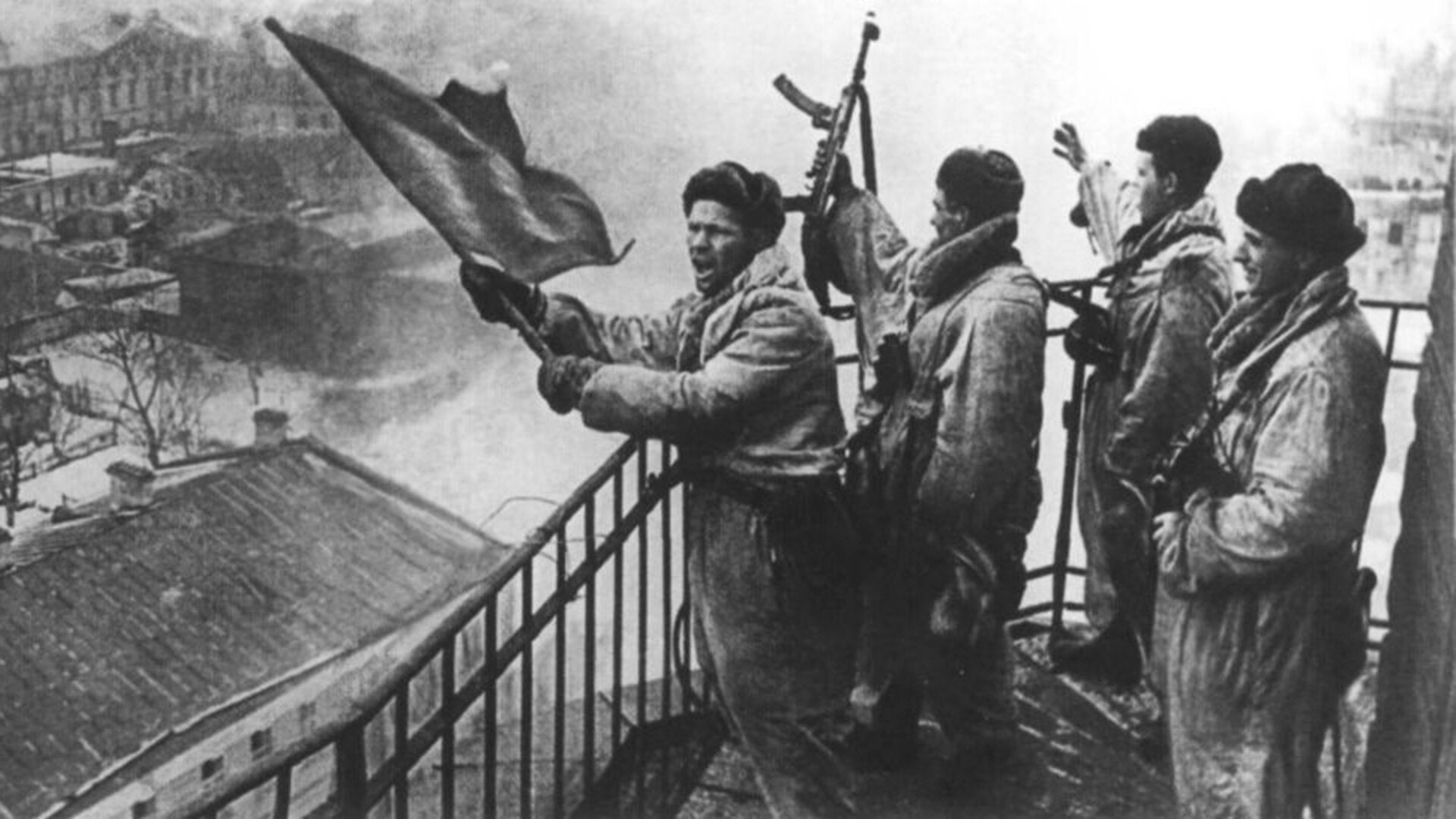
Soviet soldiers hoisting a red flag over the liberated town of Gatchina near Leningrad, January 26, 1944.
Vsevolod TarasevichOn September 8, 1941, German troops completed the encirclement of Leningrad by land. Now, the besieged city was only connected to the "mainland" by a water route across Lake Ladoga. The ‘Road of Life’, as it was known, wasn't capable of feeding the enormous metropolis, however.
Terrible starvation came to Leningrad in the winter. "People ate anything: leather belts and the soles of their shoes and not a single cat or dog was left in the city, not to mention pigeons or crows," recalled local resident Yevgeny Alyoshin. "There was no electric power and starving, emaciated people would go to fetch water from the Neva, dropping and dying on the way. The corpses stopped being removed and were just left to be buried under snow. People died in their homes - whole families, whole apartments."
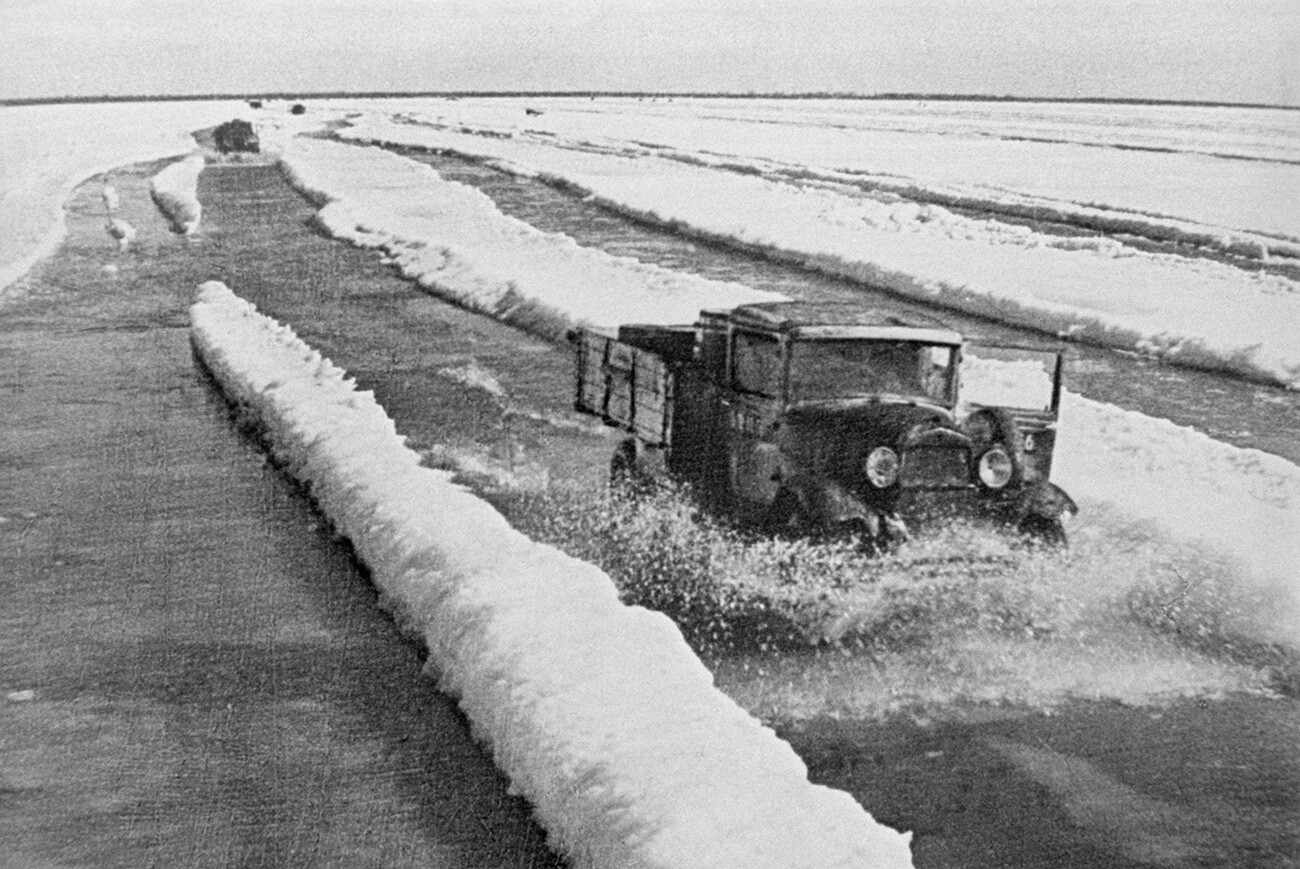
Cargo delivery to besieged Leningrad on the ice of Lake Ladoga.
Raphail Mazelev/TASSFrom the very first days of the encirclement, the Red Army made efforts to break the siege. But the large-scale offensive operations of 1941 and 1942 ended in failure through lack of manpower, resources and combat experience.
"On September 3-4, we advanced from Chernaya Rechka towards Kelkolovo without artillery support," recalled deputy commander of the 939th Regiment P.A. Chipyshev, who took part in the Sinyavino offensive of 1942. "The shells we received for our divisional field guns weren't the 76-mm ones that we needed. We didn't have any grenades. The machine-guns entrenched in the German earth-and-timber emplacements were left unsuppressed and our infantry sustained huge losses."
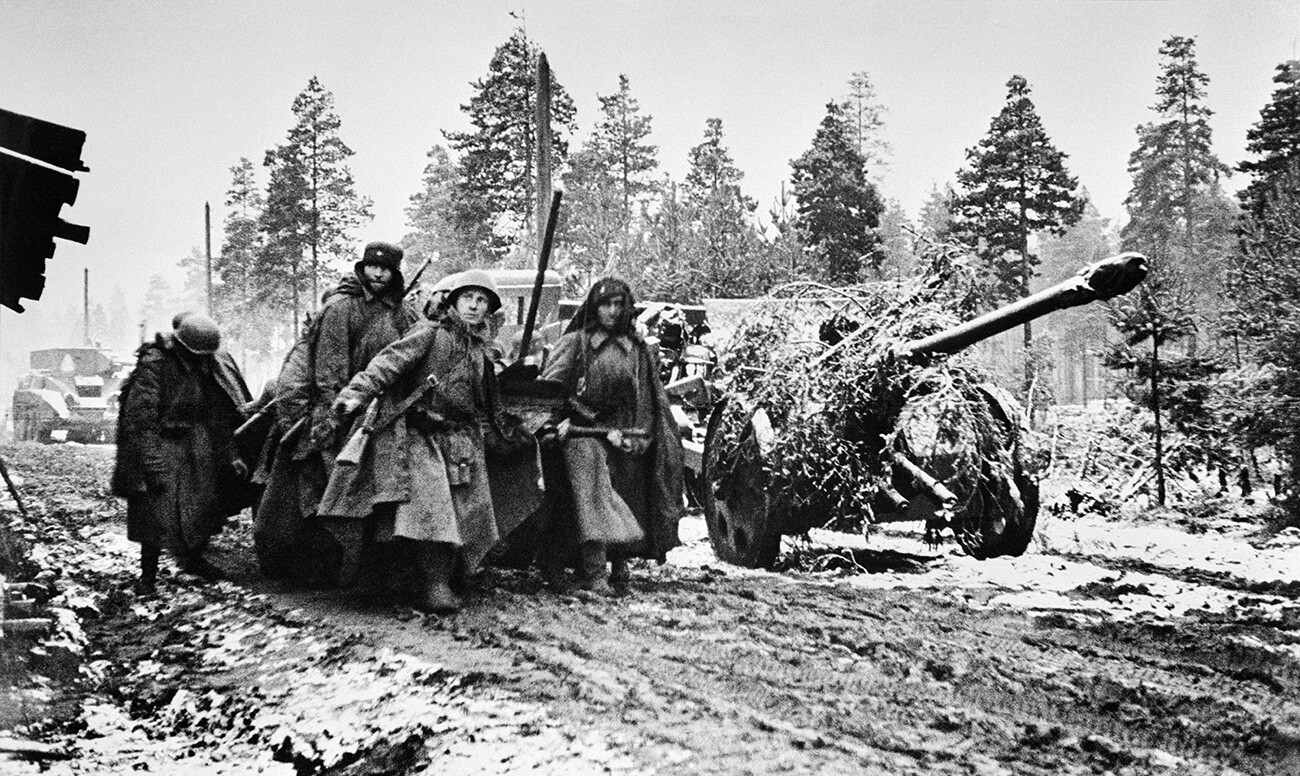
Soviet troops during the 2nd Sinyavinskaya operation, 1941.
Vswvolod Tarasevich/SputnikThey decided to mount a new attempt after the Red Army's monumental success at Stalingrad. This time, Soviet troops achieved partial success – in the course of ‘Operation Iskra’ in January 1943, they carved out a narrow corridor linking Leningrad with the remainder of the country.
At the same time, they failed to press home their offensive and to push back the enemy: The Germans maintained their positions beside the city and continued to subject it to regular shelling.
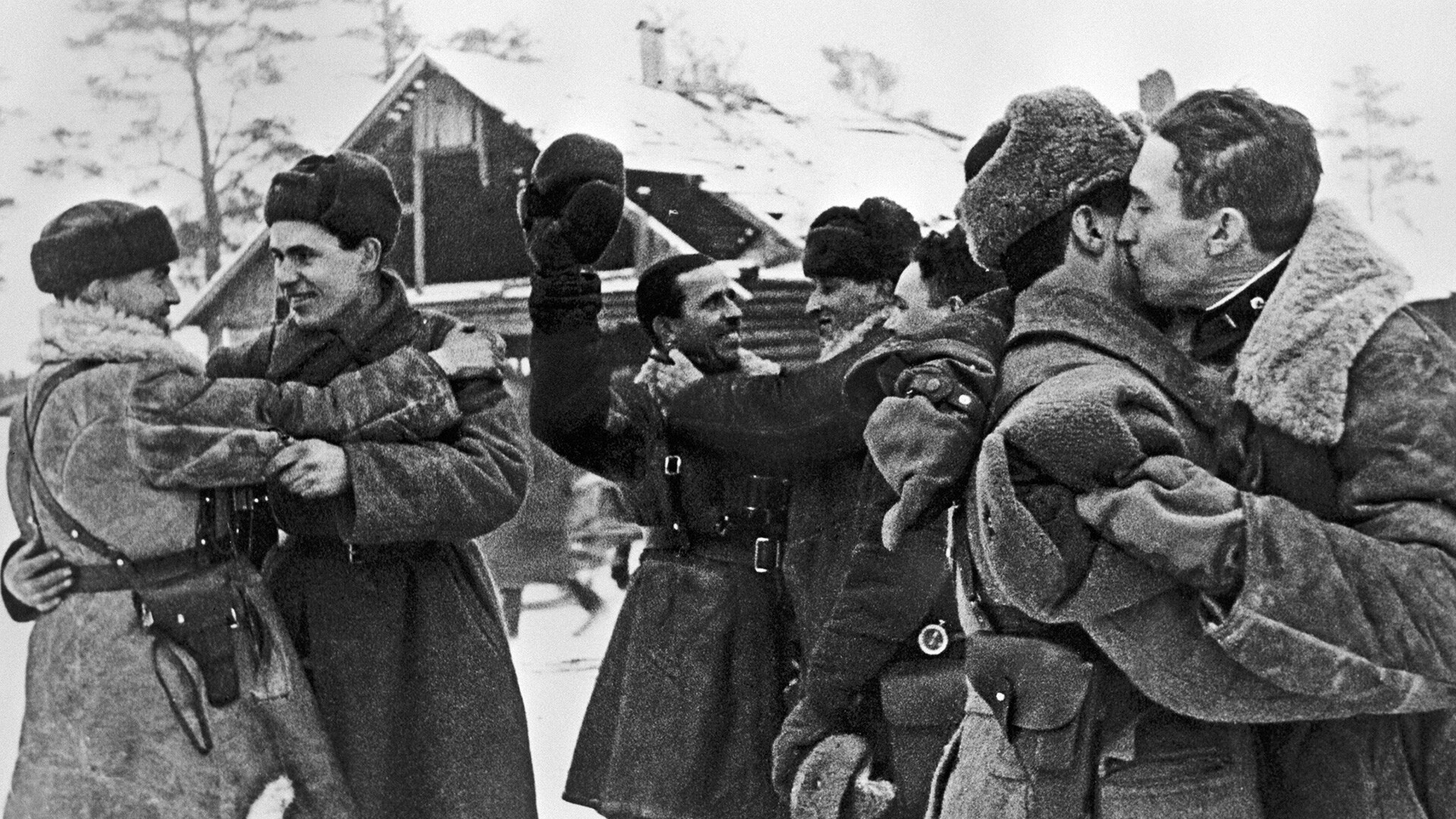
Soldiers of Leningrad and Volkhov Fronts greeting each other after breaking the blockade on Jan. 18, 1943.
Semyon Nordstein/SputnikAfter the Soviet triumph at the Kursk Salient, the Red Army command decided the time was ripe to fully break the siege. In the Fall of 1943, preparations started for a large-scale offensive in the northwest of the country.
Massive amounts of military hardware began to be moved to the Leningrad area and into the Oranienbaum Bridgehead – a part of the Gulf of Finland coast west of the city, which, though encircled on all sides by the Wehrmacht, Soviet troops had continued to hold.
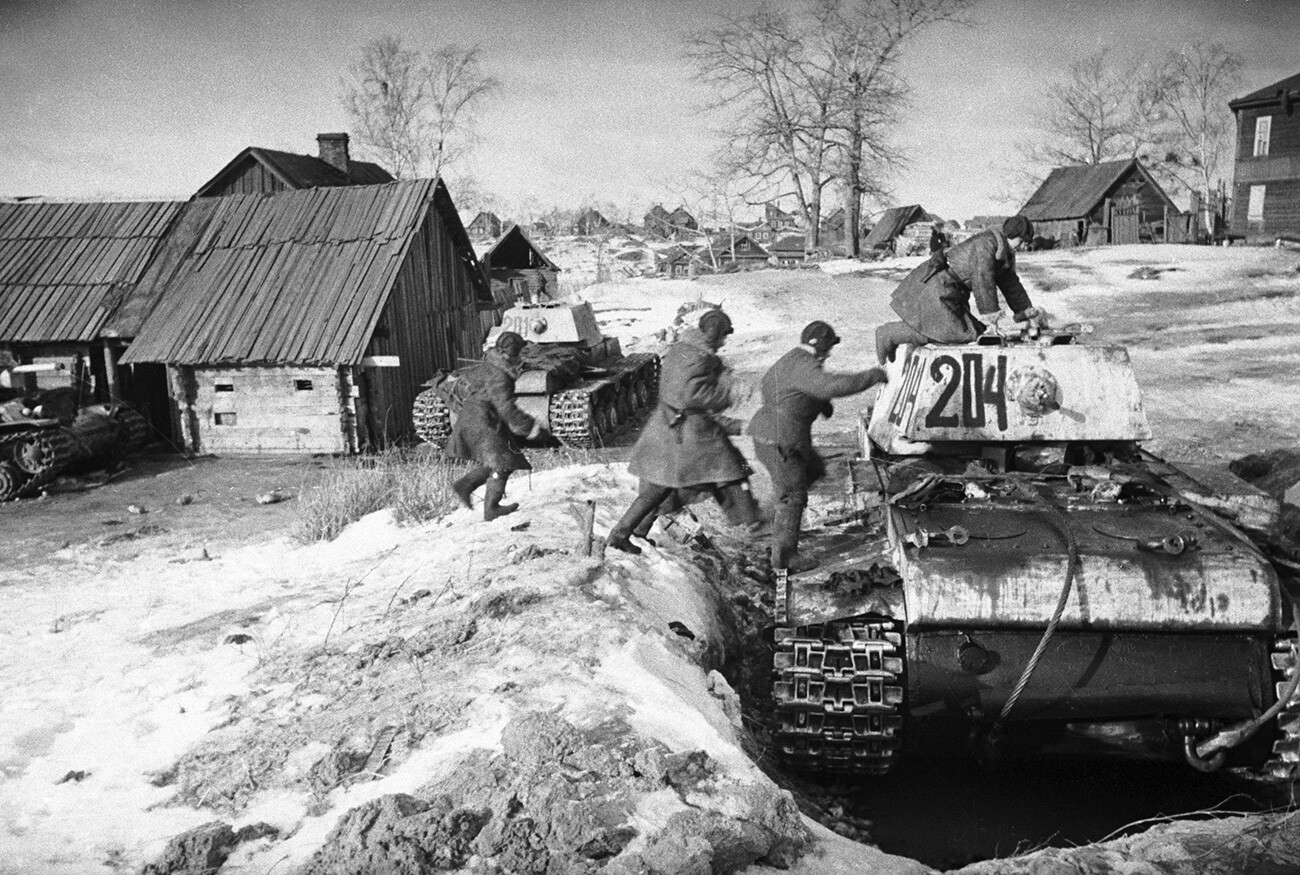
Soviet troops are preparing for an offensive.
Grigory Chertov/SputnikSuch a concentration of troops could not be concealed from the enemy. Anti-aircraft gunner Ivan Shalov recalled how, in the Pulkovo area, shortly before the offensive, the Germans addressed Soviet troops through loudspeakers: "Russkies, why so many guns? We're leaving anyway…"
In reality, the commander of Army Group North, Generalfeldmarschall Georg von Küchler, had no intention of withdrawing. His 740,000-strong grouping had prepared a multi-layered defense up to 260 km deep, with ferroconcrete field fortifications, a multitude of earth-and-timber emplacements and a network of barbed wire entanglements and minefields.
"The troop formations in this group had considerable combat experience," wrote Marshal of the Soviet Union Kirill Meretskov, "and this was particularly true when it came to offensive and defensive fighting in marshy and wooded terrain. But, we now compared favorably to the Germans in the quality of our troops and had a numerical superiority in personnel, of which we had 50 percent more, artillery and mortars – 100 percent more, aircraft – 300 per cent more, and tanks – 250 percent more."
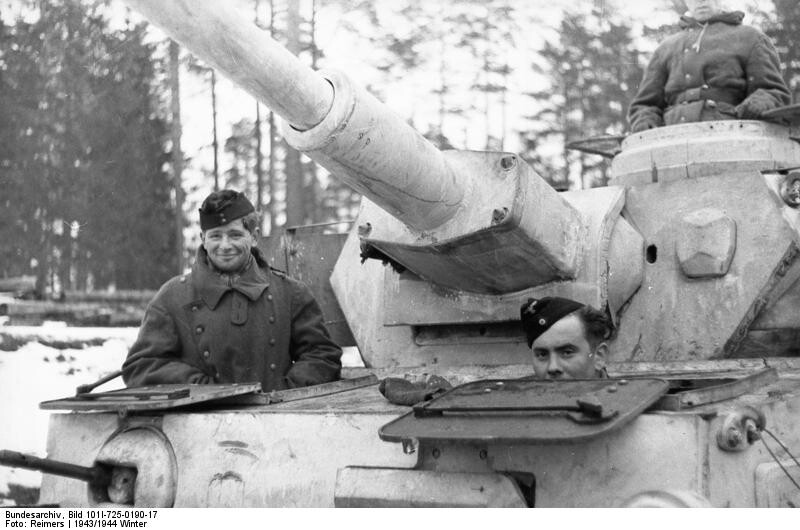
German troops near Leningrad.
BundesarchivThe ‘Leningrad-Novgorod Strategic Offensive Operation’ was launched by Soviet troops on January 14, 1944, with the advance of the 2nd Shock Army from the Oranienbaum Bridgehead in the direction of the population centers of Ropsha and Krasnoye Selo. The following day, the 42nd Army set off to meet it from the Leningrad area.
Simultaneously, the troops of the Volkhov Front were advancing near Novgorod. Their job was to pin down the German forces there and prevent the Wehrmacht command from sending reserves northwards.
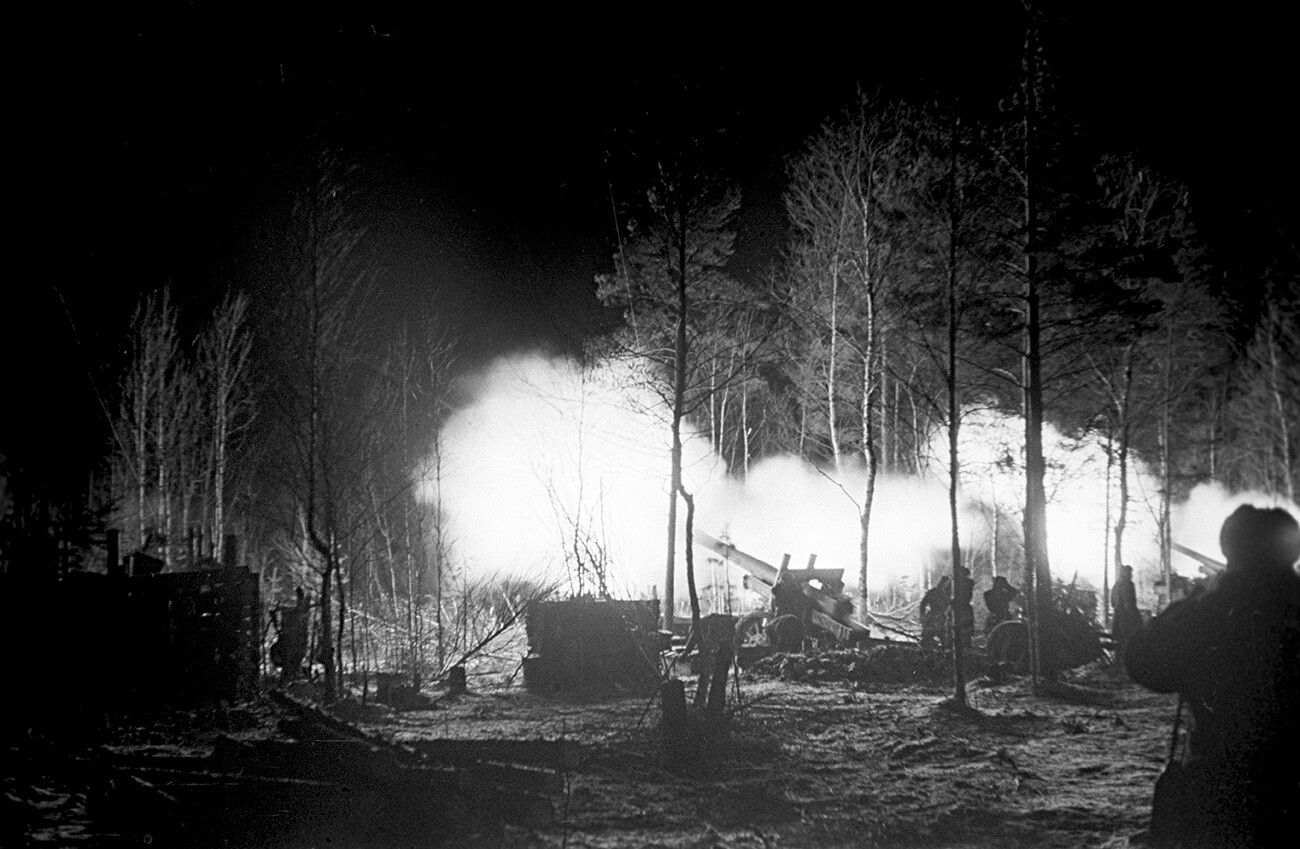
Soviet artillery during the Novgorod-Luga offensive operation (part of the Leningrad-Novgorod Strategic Offensive Operation).
Mikhail Trakhman/SputnikThe initial days of fighting were very difficult for the Red Army. Serviceman Yuri Nikulin, who went on to become a celebrated actor, recalled: "At times, there were hold-ups when it was impossible to advance further. Either a bridge had been blown up or the leading vehicle or tank had hit one of the mines that were scattered all around… Mangled vehicles and horses were discarded by the roadside, the dead and wounded were loaded in silence onto empty vehicles and then this black mass of iron, steel, fuel and human hearts – each of them beating out a single thought: forward, forward, forward – moved on again."
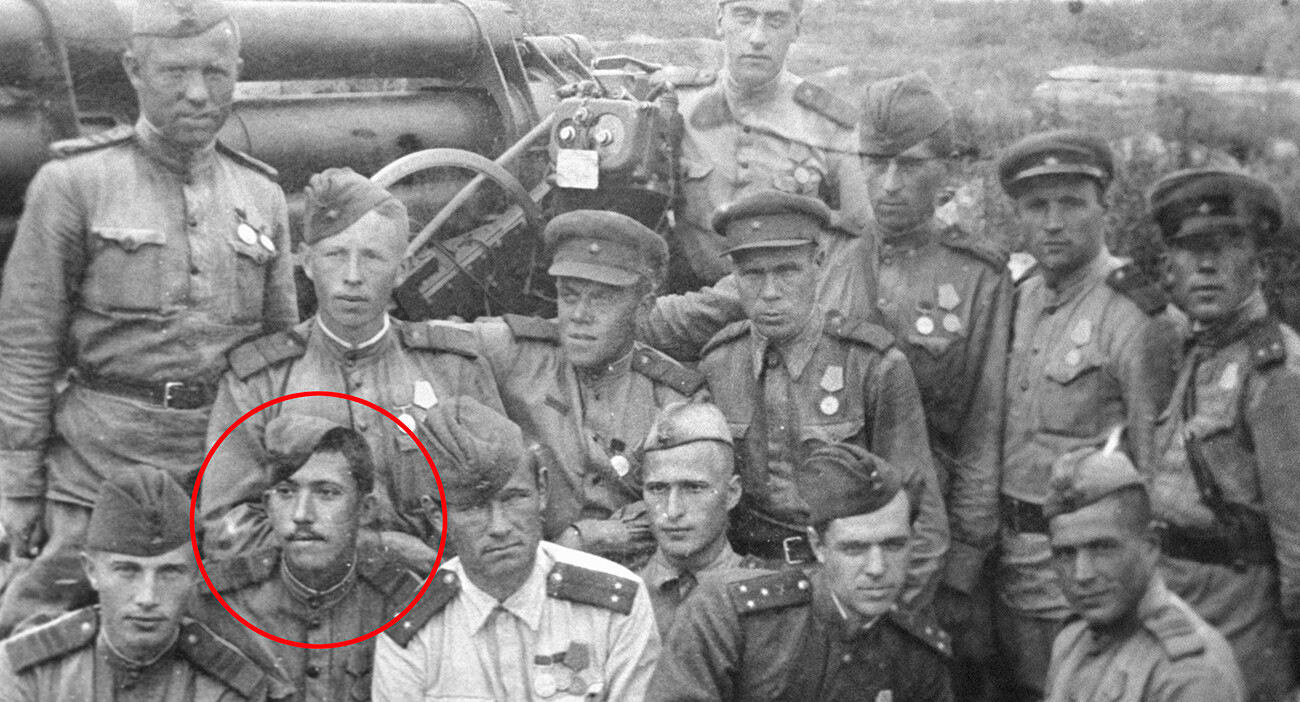
Yuri Nikulin.
Dmitry Chernov/SputnikThe offensive continued with greater success after reserves were deployed. On January 20, two Soviet armies joined up near the town of Ropsha, cutting off a part of the main German forces that had not withdrawn in time. On the same day, Novgorod was liberated.
Breakthroughs in two sectors caused the German front to start to crumble. On January 21, the Red Army occupied the highly important railway station at the Mga settlement, which the Germans dubbed the "eastern padlock" of the siege of Leningrad.
January 22, 1944, was the last time German artillery shelled Leningrad from the town of Pushkin. Two days later, the Wehrmacht was forced to abandon its positions there, too.
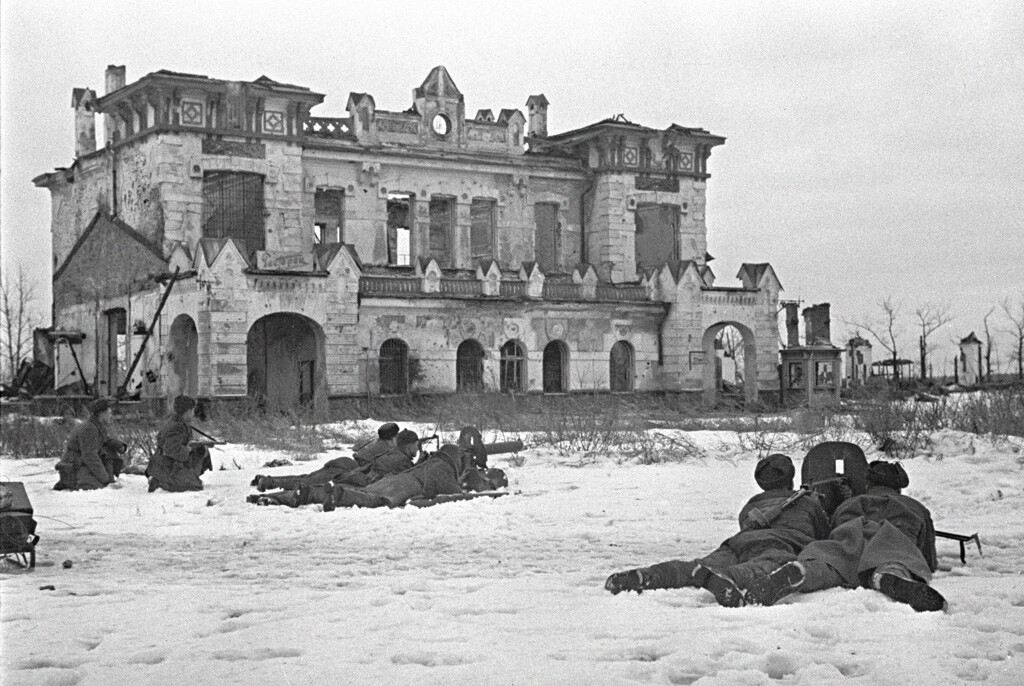
Soviet troops near the town of Pushkin.
Boris Kudoyarov/SputnikBy the end of the month, Soviet troops had driven the Germans 70-100 km back from Leningrad and reopened the city's main links with the rest of the country. On January 27, the military council of the Leningrad Front declared that the enemy siege of the city had been fully lifted.
The momentous event was marked in Leningrad with a 324-gun ceremonial salute. "Everyone who was there at the time rejoiced: They rejoiced, embraced, kissed, shouted 'Hurray!', wept with happiness and, at the same time, with sorrow at the loss of so many. So much drama! It was unforgettable!" was how Yelizaveta Dobrova recalled that day.
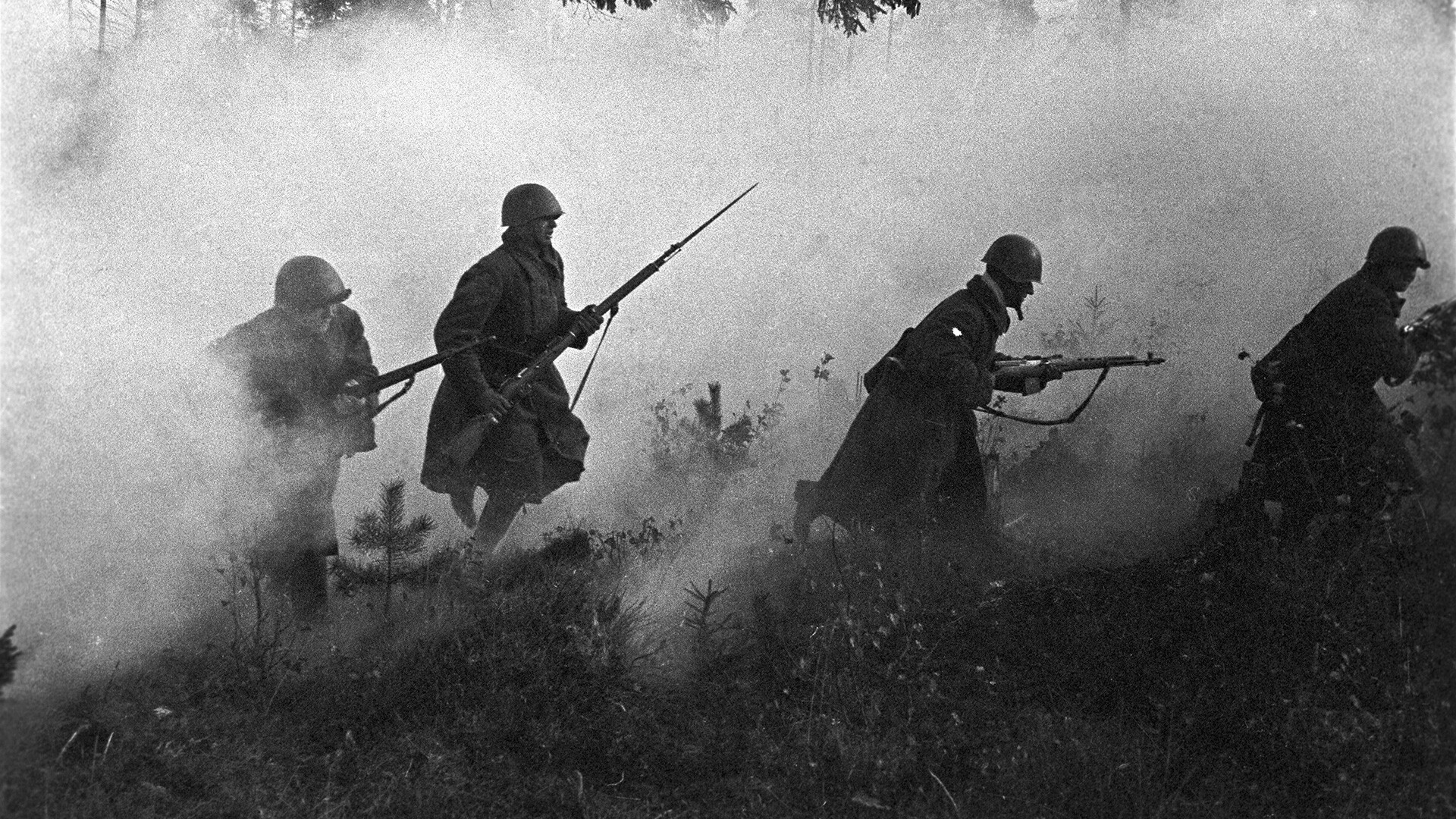
Soviet infantry attack.
Boris Kudoyarov/SputnikThe Red Army continued to push the enemy westwards, driving them another 120-160 km away from Leningrad. The Soviet troops did not succeed, however, in encircling and smashing Army Group North, as the Kremlin had hoped.
The Germans fell back to Estonia and the ‘Panther Line’ – part of the massive network of defensive fortifications collectively known as the ‘Ostwall’. There, they hoped to halt the accelerating steamroller of the Soviet offensive.
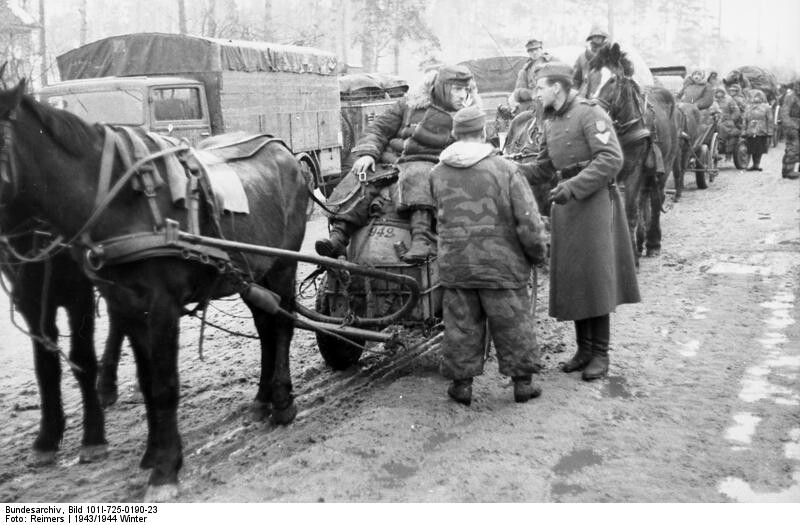
German troops retreat from the Leningrad Region.
BundesarchivIf using any of Russia Beyond's content, partly or in full, always provide an active hyperlink to the original material.
Subscribe
to our newsletter!
Get the week's best stories straight to your inbox